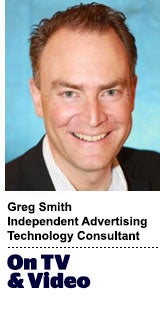“On TV And Video” is a column exploring opportunities and challenges in advanced TV and video.
Today’s column is written by Greg Smith, an independent advertising technology consultant.
Spring has sprung, and now we enter the dog days of summer.
One new advertising “flower” that is poised to grow, even among the walled gardens, is advertising-supported video on demand (AVOD) within connected TV (CTV) and over-the-top (OTT) platforms.
With the decline of pay TV, rise of OTT content, subscription video limitations and better targeting and measurement, AVOD will blossom in OTT/CTV in the seasons to come.
Pay TV households will continue to decline
US pay-TV household penetration is forecasted to decline about 2% per year over the next five years, according to Digital TV Research’s North America pay-TV forecasts.
Many viewers are fed up paying cable or satellite bills north of $100 per month, particularly given new high-quality content alternatives. The upcoming launch of 5G across mobile devices may exacerbate these declines for MVPDs.
Eyeballs will continue to move to OTT/CTV content
OTT subscription user growth has already experienced its growth spurt but is still expected to climb about 2% over the next three years, according to eMarketer. More importantly, user time spent with digital video will grow.
Nearly a third of internet users polled in a November Raymond James study said streaming services are their primary method of consuming video content, compared with 24% the prior year.
SVOD services will max out at three to four per household
Despite the substantial growth of OTT/CTV and subscription video-on-demand (SVOD) services such as Netflix and Amazon, it is unlikely that most US households will shoulder the costs of more than three to four SVOD services. The average number of OTT entertainment subscriptions that was considered adequate in a 2017 LEK study was 3.3, which was also equal to the average number of services used by the respondents, implying that subscribers are not looking for more SVOD services.
And it is likely that subscribers will need to pay more for their current SVOD services soon. Despite Netflix’s impressive growth to 125 million subscribers in Q1 2018, for example, it still has negative operating cash flow of more than $7 per subscriber on an annualized basis. Amazon Prime’s recent 20% hike in annual fees may be a prelude to Netflix raising rates. These potential rate increases will take even more air out of the SVOD bubble for new entrants and push the need to monetize content via AVOD.
New AVOD developments promise improved demand-side targeting and measurement
The IAB’s recent development of the identifier for advertising will create a common “Rosetta stone” for cookie-like targeting and tracking on a household basis. Moreover, industry-led efforts to create walled garden-like targeting and scale from companies such as Roku and Tru Optik are starting to get traction.
Marketers, trading desks and demand-side platforms are chomping at the bit to buy targeted TV campaigns in much the same way that they are buying display and video campaigns. Many OTT services have plenty of available inventory due to low rating points and incremental reach, which are eschewed by most traditional TV buyers.
But from a digital marketing perspective, OTT/CTV can become a new impactful channel for multidevice campaigns. It is likely that CTV/OTT AVOD pods will be shorter than those on television, but will generate greater attention and recall due to advanced targeting and a greater share of voice.
These trends will affect growth across both premium networks and long-tail sites. To succeed, CTV/OTT media sellers will need to be bilingual across digital and traditional TV measurement metrics. It will behoove networks and cable content providers to embrace AVOD and monetize content on their own.
By planting the seeds for AVOD today, they will have the opportunity to grow their own garden on fertile soil.
Follow Greg Smith (@webadsguy) and AdExchanger (@adexchanger) on Twitter.














